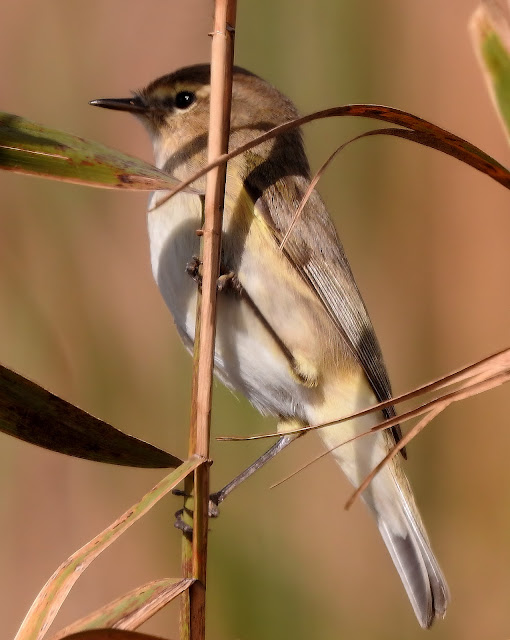The Common Chiffchaff, Phylloscopus collybita, is a diminutive and sprightly leaf warbler known for its distinctive, onomatopoeic song. This small, migratory passerine is characterized by its greenish-brown upperparts and off-white underparts, with a weight ranging from 6 to 8 grams and a length of 10-12 centimeters.
In the field, look for the Common Chiffchaff's short whitish supercilium, fine dark bill, and dark legs. Its primary projection is short, and the plumage may appear duller and browner as it wears. Juveniles are browner above with yellow-white underparts, but they soon acquire brighter plumage after their first moult.
The Common Chiffchaff breeds in open woodlands with a mix of taller trees and ground cover across northern and temperate Europe, Asia, and parts of north Africa. It prefers woodland with trees at least 5 meters high and an undergrowth of grasses and nettles.
This species has a vast breeding range, extending from Europe to eastern Siberia and northward to about 70 N. It winters in southern and western Europe, southern Asia, and north Africa. The Common Chiffchaff is one of the earliest spring migrants to return to its breeding grounds and one of the last to depart in autumn.
The male Common Chiffchaff is fiercely territorial during the breeding season, defending its core territory against rivals. It exhibits a fearless nature, even attacking predators that threaten its nest. Outside the breeding season, these birds may form small flocks with other warblers.
The song is a cheerful "chiff-chaff," which heralds the arrival of spring. Calls include a "hweet" sound, less disyllabic than the calls of closely related warblers. The song is a key distinguishing feature from similar species, such as the Iberian Chiffchaff.
The female constructs a domed nest on or near the ground, lined with feathers. Clutches typically consist of 2-7 cream-colored eggs, which hatch after 13-14 days. The female assumes most of the responsibility for brooding and feeding the chicks, with the male playing a minimal role.
The Willow Warbler and Bonelli's Warbler are similar species but can be differentiated by their longer primary projection, sleeker appearance, and different vocalizations. The Iberian Chiffchaff, once considered a subspecies, is now treated as a separate species due to differences in song, morphology, and genetics.
The Common Chiffchaff is insectivorous, feeding on a variety of insects and other small invertebrates. It is known to be an active forager, often seen flitting through foliage or hovering briefly to snatch prey.
The Common Chiffchaff is classified as "Least Concern" by the IUCN, with an extensive range and large population. While one subspecies is likely extinct, the overall species does not face significant threats at present, and populations in some areas are increasing.
































